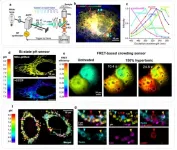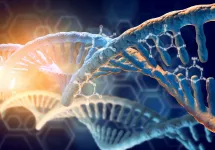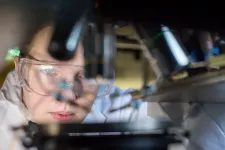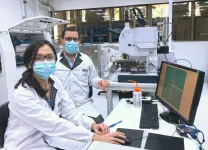(Press-News.org) In a new study from Lund University and the University of Gothenburg, patients were interviewed about their experiences ten years after undergoing obesity surgery. The results show that the effect on eating and weight regulation persisted, whereas other problems, such as feelings of guilt about still not being healthy enough, remained.
"This is one of few follow-ups from a patients perspective so long after surgery", says My Engström, researcher in nursing at the University of Gothenburg.
18 patients were interviewed in the study. All of them experienced that their eating habits and appetite were still affected after the operation: their bodies still objected, preventing them from eating as much as before surgery, and the reduction in cravings for unhealthy foods was maintained. Several participants also reported still being more easily affected by alcohol, which had consequences for their social life.
However, while the operation had brought several changes, many described their existence with their surgically altered body as the new normal, or their new everyday life.
"Several respondents found that one reason why they managed their lives with a gastrointestinal modification as well as they did was that they had been warned, and expected more complications than they actually suffered", says My Engström.
"This was interesting to hear as just over 70 per cent of those we interviewed actually did experience an event that healthcare classified as a complication, such as malnutrition, abdominal pain, gall-bladder surgery or ileus."
The participants reported still struggling to manage their lives and their weight after the surgery. This concerned aspects like how to support their children who were often also overweight. Some of the parents said that they felt resigned to their children's weight problems; they tried to provide the best possible guidance but found it difficult.
Several respondents also spoke about physical activity as a continuous cause for bad conscience. They were well aware that they should be physically active, but struggled with this. As a reason, they stated pain or their personal history of always having been bad at physical activity.
"Even if the excess weight was no longer there or did not constitute a real hindrance, the old self-image persisted as an obstacle to progress", says My Engström.
One response common to most of the patients interviewed was the great gratitude they expressed for the procedure itself and towards society for bearing the cost of it. Some participants blamed themselves when something did not work optimally, and thought that they were not "conscientious patients".
"Follow-up of these patients is often insufficient and must improve", says Kajsa Järvholm, researcher in psychology at Lund University.
"The patients should be called back to their primary healthcare centre once a year but this is seldom the case. The patients are instead expected to remember to contact their healthcare provider themselves. When they did get in touch, they often found that knowledge about the surgery was poor."
In summary, the researchers think that long-term follow-up of bariatric surgery patients must improve both within specialist and primary healthcare.
"Those who encounter bariatric surgery patients in the course of their work need both to help create realistic expectations of what the operation can change, and to take into account that many patients blame themselves and therefore hesitate to raise problems with their healthcare providers", says Kajsa Järvholm. "This process is facilitated if the healthcare providers have a non-judgemental attitude and take the time to ask the patients how they are managing in their everyday lives."
INFORMATION:
Mycobacterium tuberculosis is incredible in that it can survive for decades within its human host. It does this by varying its diet to successfully steal nutrients from the human host including immune cells; it is known to acquire and absorb multiple carbon sources from the body during infection.
In a paper published in the journal Molecular Systems Biology, Surrey scientists detail how they measure the flow of metabolites or "fluxes" through metabolic pathways when Mycobacterium tuberculosis is consuming some of its favourite nutrients. Measuring these 'fluxes' could help scientists advance new tuberculosis drugs as well as understand why the bacterium survives so long in humans and why current antibiotics are often ineffective.
By growing Mycobacterium ...
The multiplexing capability of fluorescence microscopy is severely limited by the broad fluorescence spectral width. Spectral imaging offers potential solutions, yet typical approaches to disperse the local emission spectra notably impede the attainable throughput and place substantial constraints on temporal resolution. Tunable bandpass filters provide a possibility to scan through the emission wavelength in the wide field. However, applying narrow bandpasses to the fluorescence emission results in inefficient use of the scarce signal.
In a new paper published in Light: Science & Application, a team of scientists, led by Professor Ke Xu ...
The DNA sequences produced are also called oligonucleotides. These are widely used for disease identification, for the manufacture of oligonucleotide-based drugs, and for several other medical and biotechnological applications.
The high demand for oligonucleotides therefore requires an efficient automated method for their chemical production.This process relies on phosphoramidites, which are chemical compounds that have the disadvantage of being unstable unless stored at the ideal -20 degrees Celsius.
Instruments used for DNA synthesis are not able to cool down the phosphoramidites, and consequently it is unavoidable that some of them degrade after being added ...
"We're meant to be crossing over ... but the bridge is broken": 2020 university graduates' experiences of the pandemic in Ireland
A new study from Trinity College Dublin investigating the impact of the COVID pandemic on young adults finds that they are vastly more affected than older people, and the reverberations of the disruption to some will last decades. Researchers say this group have paid a high price in the form of foregone opportunities for education, social networks, and labour market integration.
The research, involving university graduates in Ireland, is published in YOUNG: ...
A researcher at University of Limerick has developed a low-cost, environmentally friendly sensor that can detect damage in pipelines and could save water as a result.
The damage detection sensor uses highly sensitive, eco-friendly crystals that generate an electrical signal in response to a leak.
It is the first validation of these biological crystals for real world applications, according to Dr Sarah Guerin, a postdoctoral researcher at the Department of Physics and the Bernal Institute in UL, who has been developing amino acid crystal devices since 2017.
An Irish research collaboration between the Bernal Institute at UL and the Dynamical Systems and Risk Laboratory in University College Dublin has validated ...
In mathematics, simple equations can generate a complex evolution in time and intriguing patterns in space. One famous example of this is the Mandelbrot set, named after the French-American mathematician of Polish origin, Benoit B. Mandelbrot (1924-2010), the most studied fractal. This set is based on a single quadratic equation with only one parameter and one variable. The fascinating fractal patterns of the Mandelbrot set have attracted attention far beyond mathematics.
An article by Ralph Andrzejak, entitled "Chimeras confined by fractal boundaries in the complex plane", forms part of a special edition of the journal Chaos in memory of Russian professor Vadim S. Anishchenko, (1943-2020), published on 3 May 2021. Andrzejak is head of the Nonlinear Time Series Analysis Group ...
Intelligent materials, the latest revolution in the field of materials science, can adapt their properties depending on changes in their surroundings. They can be used in everything from self-healing mobile phone screens, to shape-shifting aeroplane wings, and targeted drug delivery. Delivering drugs to a specific target inside the body using intelligent materials is particularly important for diseases like cancer, as the smart material only releases the drug payload when it detects the presence of a cancer cell, leaving the healthy cells unharmed.
Now, researchers from the Centre ...
Researchers at the Francis Crick Institute and the Latvian Institute of Organic Synthesis have designed a drug-like compound which effectively blocks a critical step in the malaria parasite life cycle and are working to develop this compound into a potential first of its kind malaria treatment.
While drugs and mosquito control have reduced levels of malaria over recent decades, the parasite still kills over 400,000 people every year, infecting many more. Worryingly, it has now developed resistance to many existing antimalarial drugs, meaning new treatments that work in different ways are urgently needed.
In their research, published in PNAS, the scientists developed a set of compounds designed to stop the parasite being able to burst out of red ...
Multiple sclerosis, or MS for short, manifests itself slightly differently in each person - which is why some call it "the disease of a thousand faces." Arguably the worst manifestation of MS is its chronic progressive form. Unlike the more common relapsing-remitting variant (RRMS), in which sufferers are often symptom-free for months or even years, patients with the primary progressive form of the disease (PPMS) see their condition steadily deteriorate with no remissions.
Poorly insulated neurons die off
Today's therapeutic approaches are based on the assumption that the immune system is making a mistake and waging an inappropriate attack on the layer of myelin that surrounds and insulates the nerve cells' long, ...
AdaptiFont has recently been presented at CHI, the leading Conference on Human Factors in Computing.
Language is without doubt the most pervasive medium for exchanging knowledge between humans. However, spoken language or abstract text need to be made visible in order to be read, be it in print or on screen.
How does the way a text looks affect its readability, that is, how it is being read, processed, and understood? A team at TU Darmstadt's Centre for Cognitive Science investigated this question at the intersection of perceptual science, cognitive ...



